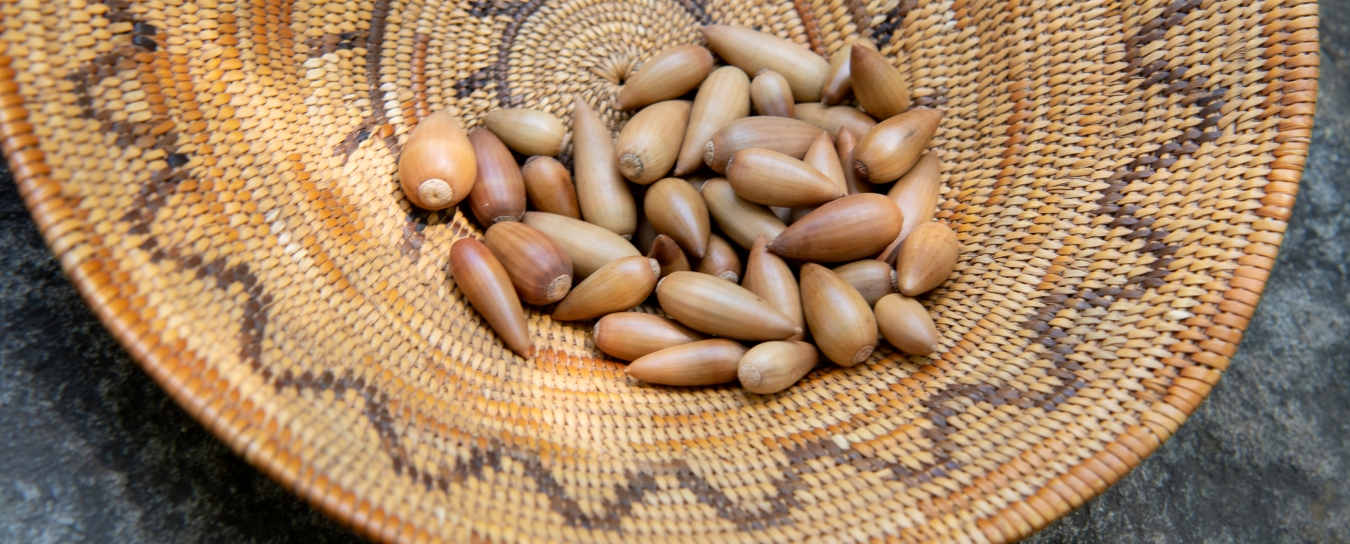
Anthropology
Check our anthropology FAQ for information about artifacts and more. Our Chumash Life pages for teachers and students provide a basic introduction to some aspects of traditional daily life.
- Anthropology
- Rocks & Fossils
- Invertebrates
- Vertebrates
- Botany
- Astronomy
- Fungi
- General
- Recently Asked
Native American basket?
My mother had this basket for years, and it was in some of the stuff I saved after she died. Now I myself am in my 70's. I do not know if the basket is authentic or an imitation, although I do know that either way it is quite beautiful and well made. If it is an authentic Native American basket I would be happy to donate it to a museum that might want it. If not, I can at least let my family know for future that it is not authentic and "estate worthy"... just a beautiful piece of workmanship.
I've attached a picture taken from the top, one taken of the bottom side of the basket. I tried to take photos showing the size. The basket is just over 8" wide and is only about 2.25" tall. Anything you can share with me would be appreciated.




Curator Response
Hi Patti,
Thank you for including these photos from multiple angles, with scale. Although there’s no substitute for seeing a basket in person, they are helpful.
Based on your photos, this is an authentic Native American basket from the Tohono O’odham (formerly known as Papago) nation of southern Arizona. They are known for being excellent basketweavers. The plant materials they use include yucca and devil’s claw—a wild native plant that has been cultivated by Native weavers for generations to provide the black design strands. While these baskets have had many Indigenous cultural uses, today they are made primarily for sale.
The large Tohono O’odham reservation is composed of four non-contiguous segments within the Sonoran Desert and the tribal government operations are based in Sells, near the southern border. I’m not certain whether they have a museum or cultural center that would appreciate receiving this basket. It is not particularly old, rare, or unusual, so my recommendation would be to keep it and enjoy it.
Best,
Curator Emeritus of Ethnography Jan Timbrook, Ph.D.


